BlazeTank: Model of Aircraft Fuel Tank Flammability, Fire and Explosion
BlazeTank is a PC-based fast running engineering software that predicts the flammability of fuel tanks depending on the composition, phase and properties of the fuel, fuel tank geometry, and the amount of fuel. If the fuel tank is flammable, it predicts the ignition of fuel due to various sources such as a spark, hot fragments (for example, from an IED), hot surfaces and flame. In the event of ignition, it predicts the deflagration overpressure versus time and tank failure. The model also outputs the temperatures and densities of burned and unburned gases and flame speed versus time and the duration of explosion.
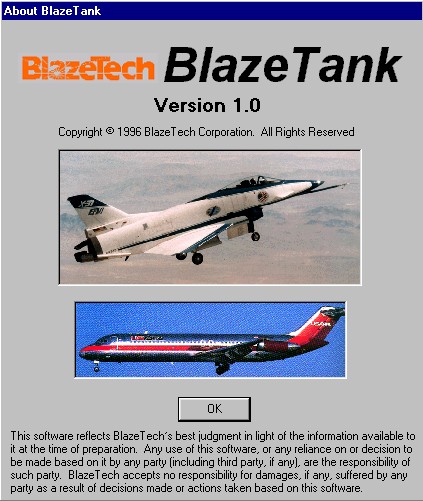
We have validated the BlazeTank model by comparing its predictions with test data for various types of fuels including jet fuel, hydrogen, propane and isooctane. Sample comparisons for jet fuel and hydrogen are shown in Figures 1 to 4 below.The software has been fully developed and validated (both at component level and system level) with a Technology Readiness Level (TRL) of 6.
BlazeTank can be used to evaluate the fuel tank protection technologies against various types of threats including equipment malfunction and fragments from IEDs.
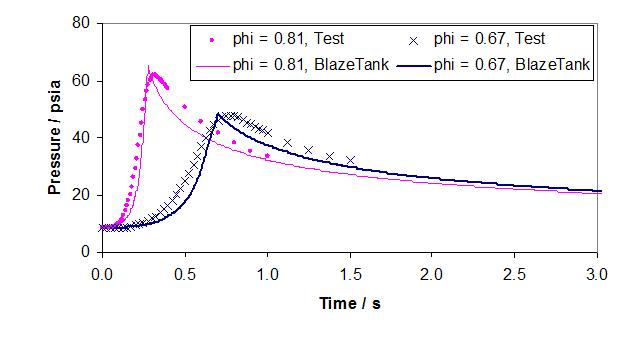
Figure 1: Comparison of BlazeTank predictions of pressure-time histories at different fuel-air equivalence ratios (phi) with jet fuel explosion tests in a quarter scale center wing tank of an aircraft. Test data from Shepherd et al, 2000 (Explosion Dynamics Laboratory Report FM 98-6).
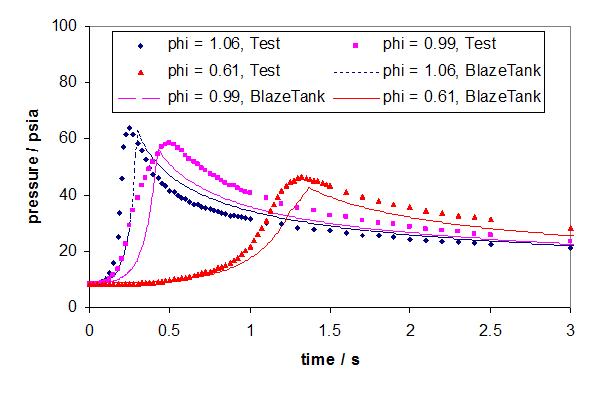
Figure 2: Comparison of BlazeTank predictions of pressure-time histories at different fuel-air equivalence ratios (phi) with jet fuel explosion tests in CalTech's HYJET test facility. Test data from Shepherd et al, 1997 (Explosion Dynamics Laboratory Report FM97-5).
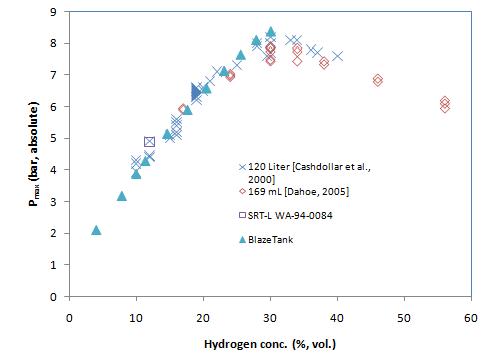
Figure 3: Comparison of BlazeTank predictions of peak deflagration pressures with hydrogen explosion test data from Dahoe (2005) and Cashdollar et al (2000), and calculations reported in a DOE report (SRT-LWA-84-0084).
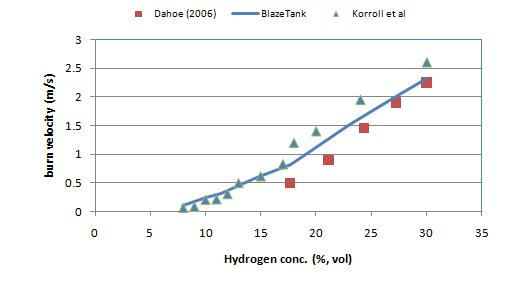
Figure 4: Comparison of BlazeTank's burn velocities for hydrogen with test data from Dahoe (2005) and Korrol et al (2001).
